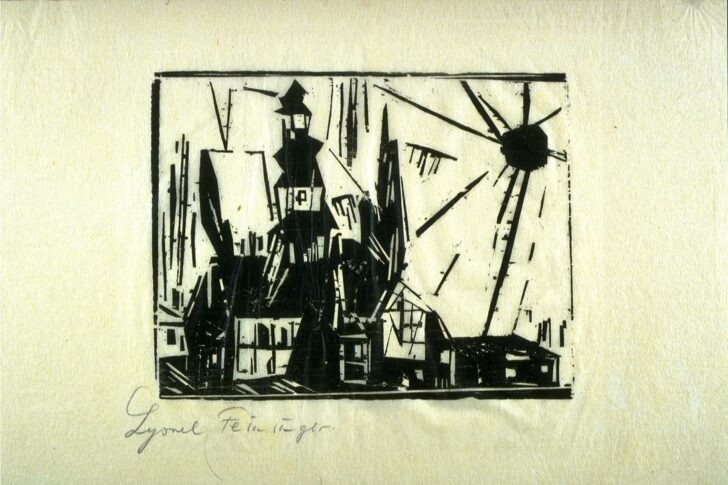Troistedt
Lyonel Feininger

Description
American-born Lyonel Feininger was sent to Germany at the age of seventeen to study music; he soon discovered a deep love of art and remained in his adopted homeland as a working artist for nearly forty years. Though exhibiting with Die Brücke in 1912 and a year later with Der Blaue Reiter, Feininger was at heart an independent. Unlike many of his contemporaries, he rarely depicted the human form but turned instead to landscapes and architecture, with particular attention to the expressive effects of light.
In Troistedt, named for a village outside of Weimar in eastern Germany, we see an excellent example of Feininger’s deft handling of light upon architecture. A glimpse of buildings aglow in the expansive rays of a bold sun, this composition highlights the role Cubism played in the artist’s work. In the jagged, intersecting planes, foreground and background are virtually indistinguishable, and we recognize the artist’s growing interest in Bauhaus-inspired philosophies, in which luminescent architectonic forms help to convey the artist’s deeper messages regarding utopian ideals.
Katie Weiss, Exhibitions Assistant
"Graphic Visions: German Expressionist Prints & Drawings"
January - April 2003
Usage Rights:
If you are interested in using an image for a publication, please visit https://umma.umich.edu/request-image/ for more information and to fill out the online Image Rights and Reproductions Request Form.